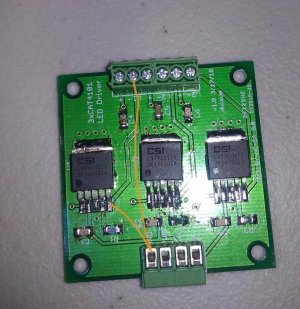mm.reefs
Member
I believe that I remember reading in this thread that it was possible to get more than 1 amp through a string of LEDs. Was it just a matter of running two drivers to the same string? For example, have each driver outputting 750mA and connect them to one string for a total of 1.5A running through the string of LEDs. Am I way off on this?
Scratch that, found the answer.
I think that post 1503 is what you are looking for.

